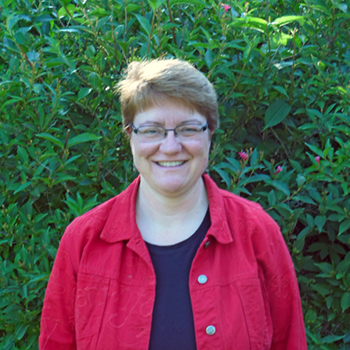
The OECC team has received a fair number of questions lately about data centers. In particular, people ask us about energy and water use at these facilities. So here is some background on data centers.
Data Center Basics
A data center is a facility that houses information technology (IT) infrastructure. Historically most businesses and local governments had mini data centers inside their buildings—we used to call these server closets. Increasingly, though, entities are storing data and doing work “in the cloud”, which means the IT infrastructure is at a data center, a facility dedicated to computing. While the number and size of data centers has been growing for some years, new Artificial Intelligence (AI) efforts have further accelerated the growth in data centers in the US and globally because AI uses a lot of computing resources.
This graph from the Lawrence Berkeley National Laboratory’s 2024 United States Data Center Energy Usage Report shows the growth in data center electric consumption.
Here in Dane County, we benefit from AI and cloud computing in various ways. Cloud computing enables hybrid work situations and online meetings, for example. And AI machine learning is helping scientists to expedite various kinds of research, analyzing data faster than ever before, which could help identify new solutions to various wicked problems, including climate change. From my perspective it seems impractical to opt out of a future that includes more AI and cloud computing, which means we have to assume the future will involve more data centers.
Data centers vary in size and function. In some cases, a single tech company owns a data center whereas in other cases a third-party business owns the center, leasing computing space to both public and private entities.
A key priority for data centers is reliability so facilities are built in areas with excellent access to the electric grid as well as with backup generators to ensure there are no power outages.
A big resource challenge for all data centers is keeping computer equipment cool. Data centers use a variety of techniques for cooling; some technologies involve a lot of on-site water usage whereas other approaches use less water on site but consume greater amounts of electricity, which can increase off-site water usage at a fossil fuel-powered power plant that supplies electricity to a data center.
Most data centers have a small on-site staff so these facilities do not typically cause increased traffic once the construction phase is complete. Neighbors may notice increased noise from the cooling systems or the monthly testing of the backup generators. Communities around the US leverage various kinds of sound barriers to mitigate noise concerns.
For more on data centers in general, see Beginner’s Guide to Data Centers.
Planning for Data Centers
As data centers become more common in more areas of the US, people are raising questions about how local communities can best plan for these facilities.
One key question is about how to categorize a data center. While it looks like an office building it uses a lot more electricity, similar to an industrial facility but with less site traffic. In some parts of the US local governments are creating a new category of facilities to reflect the unique characteristics of a data center.
Another key consideration is resource use. A large data center will consume large amounts of energy and/or water resources. Typically, this requires new utility infrastructure. There is a lot of discussion nationally about how to ensure a fair allocation of the costs associated with new utility infrastructure. In my view this ACEEE paper about how data centers could increase energy affordability is especially inspiring.
Communities are also interested in the economic development potential of data centers. Data centers are businesses, contributing to the local economy via property taxes and other means. Additionally, there is the jobs angle. Since most of the jobs associated with a data center are construction jobs, a campus with phased construction of data center facilities will generate longer term employment benefits than a single facility data center.
Data Centers in Dane County
There are already a variety of small data centers in Dane County.
Recently QTS, a Kansas-based company, has proposed a hyperscale data center campus in the Town of Vienna. The Township is currently completing an update to their Comprehensive Plan and once that update is complete the Town Board will have the opportunity to consider the QTS request to modify the Town’s Comprehensive Plan. If the Town Board does approve the QTS request then that modification would go to the Dane County Board of Supervisors for their approval. Every phase of that process is public, providing local community members opportunities to share their thoughts and ideas.
You can read more about the proposed QTS Project in Dane County in various news articles:
From a resource perspective it is our understanding that QTS prefers to use a closed-loop glycol system for cooling, which means their facilities would use less water on site and more electricity. The QTS electric usage could be substantial, up to 2.5X the total electric usage of everything in Dane County once they build out the full campus. Given our climate action goals we are, of course, interested in how much of that new power can be supplied from renewable energy sources and whether QTS and the utility (Alliant Energy in this case) are pursuing all opportunities around energy efficiency and demand response to mitigate the electric load.
At this time our Office does not have a lot of firm answers on the QTS project. Instead, we are asking questions, learning from experts from other regions and maintaining our local climate goals as our North Star. At the Dane County Office of Energy & Climate Change we aim to continue to make progress toward cutting total countywide emissions in half by 2030, as a first step toward carbon neutrality by 2050. So whether the topic is data centers or EV charging or food waste I tend to focus on finding the path that supports our broader climate goals and I hope you will too. After all, we’re in this together.

Kathy is the Director of the Dane County’s Office of Energy and Climate Change. In that role she's leading efforts to implement the Climate Action Plan. Prior to coming to Dane County, Kathy led Cool Choices and, prior to that, she led Wisconsin's Focus on Energy program.
The Dane County Office of Energy & Climate Change maintains this blog as a way to offer:
To be sure that you don't miss new blog entries, subscribe to our email updates.